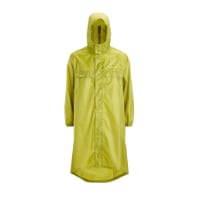LesBrass
Likes Walking
- Time of past OR future Camino
- yes...
I'm wondering if anyone has any experience of this please?
A few weeks ago, when walking with my 2nd pair of new boots, I realises they were too big and called my husband to come and get me, rather than keep walking and risk blisters. To stop my feet moving around in the shoe I tied the laces really tight (big mistake).
I noticed when I got home a mild little ache at the top of the arch of my right foot and a little on the top of my foot.
Over the last few weeks I've felt this again... very mild, nothing serious, but a persitant mild ache after walking... but nothing that casued me any concern. I thought it was just aching feet. My new boots feel great, no rubbing, no loseness and I am really enjoying walking with them.
Yesterday and now again today the ache is really quite painful. It is focused on the top of the arch of the foot. I've applied Volteral ibroprofen cream and I can seek a podiatrist on monday but I'm now getting really concerned that I've put my walk in jeopardy? I've only been walking for an hour so and not been really pushing myself.
From searching the location of the pain it could be the posterior tibial tendon? but I have no ankle pain? If this is the case have I put my walk at risk? I am leaving in 7 weeks?
A few weeks ago, when walking with my 2nd pair of new boots, I realises they were too big and called my husband to come and get me, rather than keep walking and risk blisters. To stop my feet moving around in the shoe I tied the laces really tight (big mistake).
I noticed when I got home a mild little ache at the top of the arch of my right foot and a little on the top of my foot.
Over the last few weeks I've felt this again... very mild, nothing serious, but a persitant mild ache after walking... but nothing that casued me any concern. I thought it was just aching feet. My new boots feel great, no rubbing, no loseness and I am really enjoying walking with them.
Yesterday and now again today the ache is really quite painful. It is focused on the top of the arch of the foot. I've applied Volteral ibroprofen cream and I can seek a podiatrist on monday but I'm now getting really concerned that I've put my walk in jeopardy? I've only been walking for an hour so and not been really pushing myself.
From searching the location of the pain it could be the posterior tibial tendon? but I have no ankle pain? If this is the case have I put my walk at risk? I am leaving in 7 weeks?



















